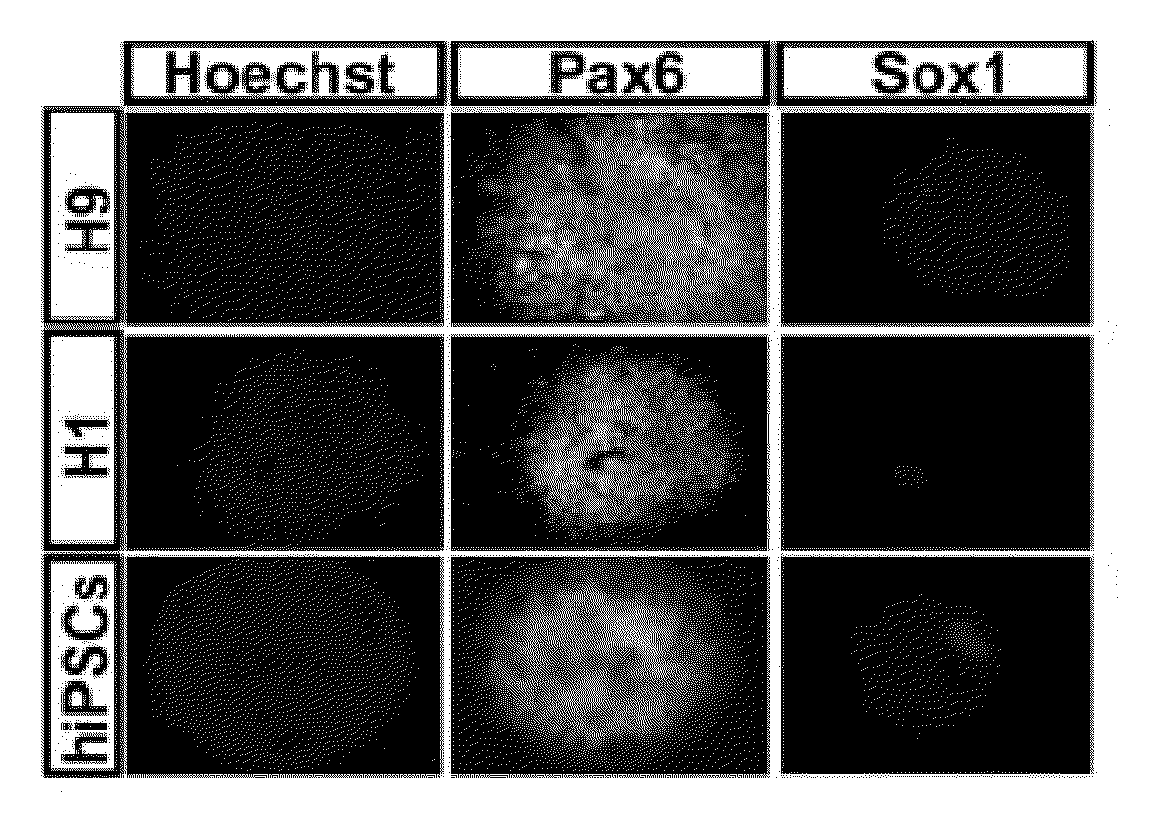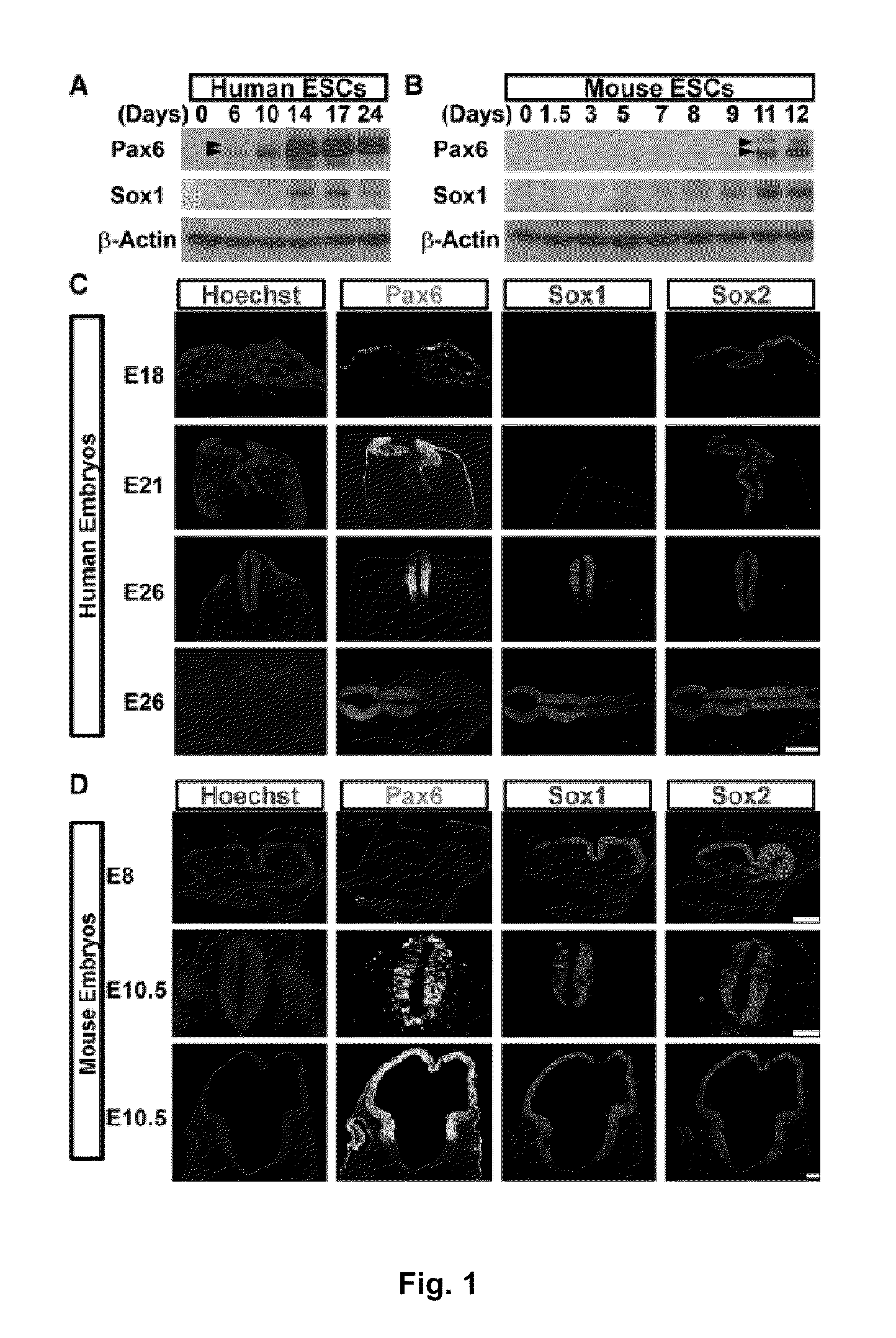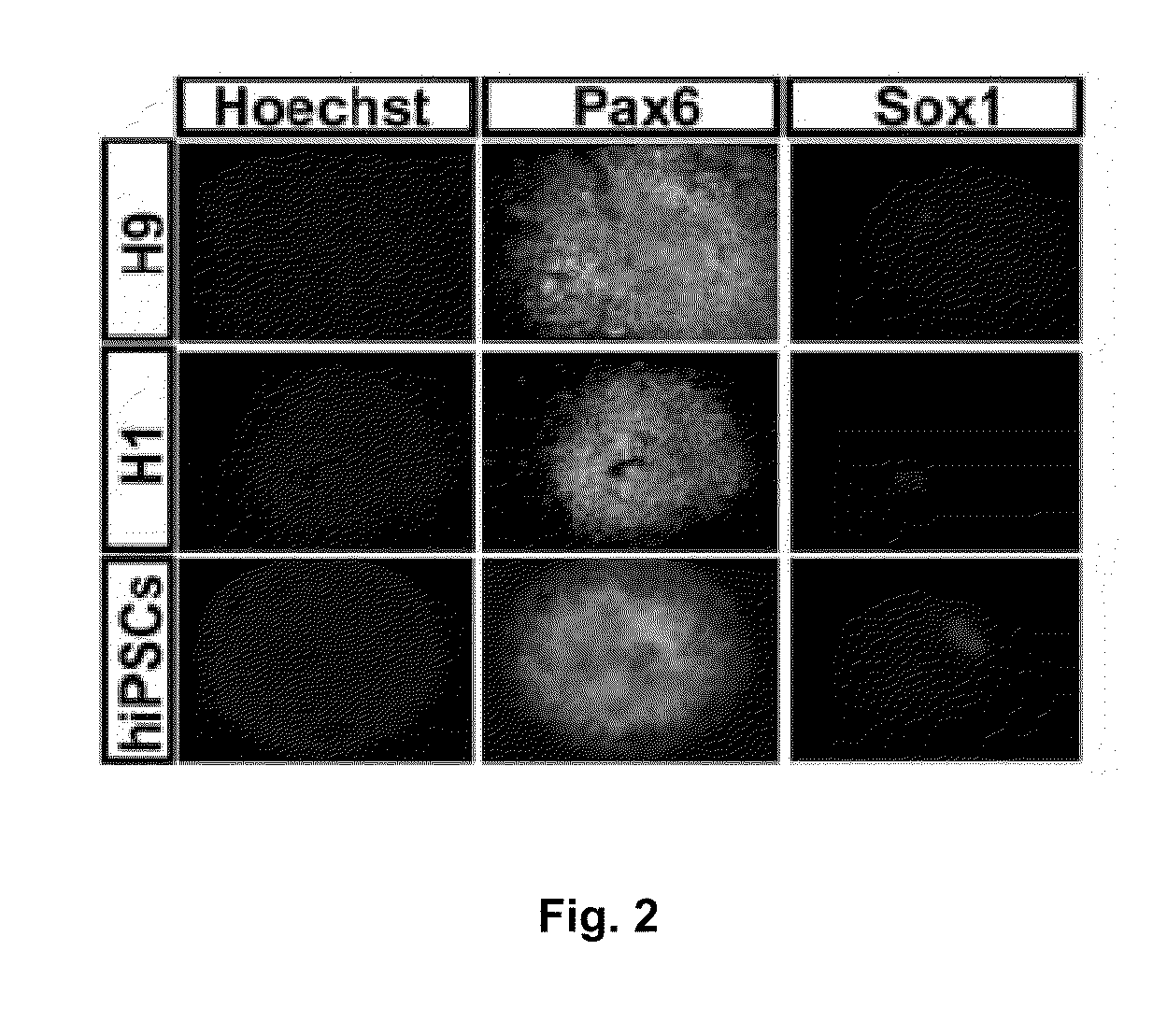Controlling the potential of primate neural stem cells by regulating pax6
- Summary
- Abstract
- Description
- Claims
- Application Information
AI Technical Summary
Benefits of technology
Problems solved by technology
Method used
Image
Examples
example 1
[0070]In Example 1, we show that Pax6 is uniformly expressed in pNSCs of human fetuses and those differentiated from human embryonic stem cells (hESCs). This is in contrast to the later expression of Pax6 in restricted mouse brain regions. Knockdown of Pax6 blocks pNSC specification from hESCs. Overexpression of either Pax6a or Pax6b, but not Pax6ΔPD, triggers hESC differentiation. However, only Pax6a converts hESCs to pNSCs. In contrast, neither loss nor gain of function of Pax6 affects mouse pNSC specification. Both Pax6a and Pax6b bind to pluripotent gene promoters but only Pax6a binds to pNSC genes during human pNSC specification. These findings indicate that Pax6 is a transcriptional determinant of the human pNSC and suggest that Pax6a and Pax6b coordinate with each other in determining the transition from pluripotency to the pNSC fate in humans by differentially targeting pluripotent and pNSC genes.
[0071]Introduction
[0072]In mammals, the stepwise cell fate transition during ea...
example 2
Genes Highly Enriched in pNSCs but Downregulated in Regional NSCs
[0126]pNSCs differ from regional NSCs in several aspects. For example, pNSCs are Pax6+ / Sox1−, while regional NSCs are Sox1+. In addition, pNSCs have the potency to be patterned to all kinds of neural cells with different regional identities, but regional NSCs are fixed to certain regional identities. In order to further characterize the differences between pNSCs and regional NSCs, we compared the gene expression profiles of day10 pNSCs and day17 forebrain dorsal NSCs using an affymetrix mircroarray (Pankratz et al., Stem Cells, 2007, 25:1511-1520; Li et al., Development, 2009, 136:4055-4063). Genes which were expressed in pNSCs but their expression was downregulated for at least 4 fold in regional NSCs are listed below in Table 1. These genes will thus be served as representative genes to separate pNSCs and regional NSCs. They are also candidate genes potentially useful for pNSCs reprogramming.
TABLE 1AffymetrixPhysisol...
example 3
Overexpression of Pax6 in Regional Neural Stem Cells Reverts the Regional NSCs to pNSCs
[0127]Transcription factors have the potential to reverse the cell differentiation programs or trans-convert one cell fate to another. For example, Oct4, Sox2, KIM and c-Myc are the four typical transcription factors for reprogramming iPSCs (Yu et al., Science, 2007, 318: 1917-1920; Takahashi et al., Cell, 2007, 131: 861-872). In addition, Ascl1, Brn2 (also called Pou3f2) and Myt1I are sufficient to directly convert fibroblasts to neurons (Vierbuchen et al., Nature, 2010, 463:1035-1041).
[0128]We hypothesized that regional NSCs can also be reprogrammed to pNCSs through forced expression of transcription factor(s) and Pax6 may be the critical factor given its unique role in specifying pNSCs. To test this hypothesis, we derived cortical NSCs from human fetal cortex (Schneider et al., Hum Mol Genet, 2007, 16:651-666; Wright et al., Exp Cell Res, 2006, 312:2107-2120). These regional NSCs are fate-restr...
PUM
| Property | Measurement | Unit |
|---|---|---|
| Time | aaaaa | aaaaa |
| Elongation | aaaaa | aaaaa |
| Level | aaaaa | aaaaa |
Abstract
Description
Claims
Application Information
 Login to View More
Login to View More - R&D
- Intellectual Property
- Life Sciences
- Materials
- Tech Scout
- Unparalleled Data Quality
- Higher Quality Content
- 60% Fewer Hallucinations
Browse by: Latest US Patents, China's latest patents, Technical Efficacy Thesaurus, Application Domain, Technology Topic, Popular Technical Reports.
© 2025 PatSnap. All rights reserved.Legal|Privacy policy|Modern Slavery Act Transparency Statement|Sitemap|About US| Contact US: help@patsnap.com



